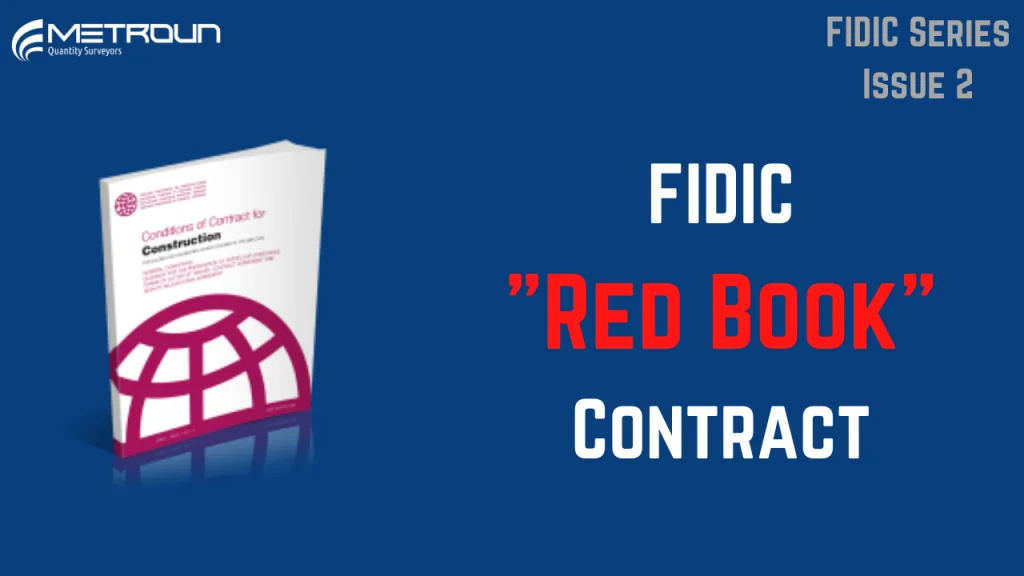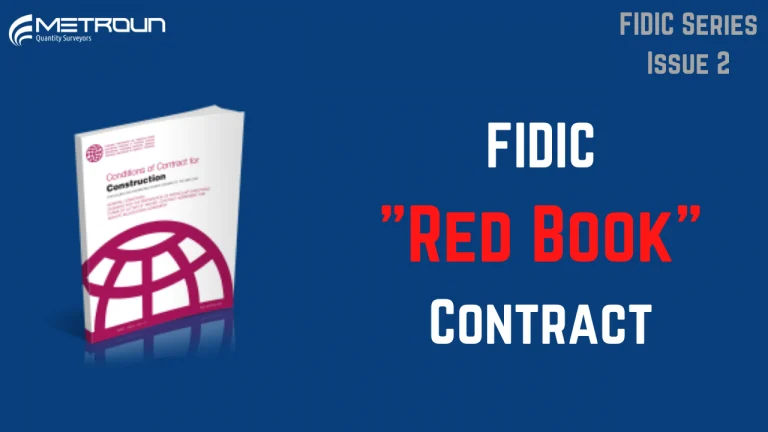In the UK, JCT contracts are the most commonly used within the construction industry with the NEC form of contracts closing the gap from second place. However, on a global scale FIDIC contracts still run the show. This may be because they are suitable for parties of different nationalities, speaking different languages and coming from different jurisdictions.
In this post we will be dissecting the most famous and most used contract from FIDIC; The Red Book.

The red book or to give it its proper title, Conditions of Contract for Construction for Building and Engineering works designed by the Employer was first published in 1999.
As you can probably guess from the title of the book, the red book provides a contract for construction work where the design is carried out by the employer. Although the majority of the design will be carried out by the employer, there is still scope in the contract for the contractor to design certain elements.
If you are looking for a contract where the majority or all of the project is designed by the contractor, the yellow or silver book would be most appropriate.
Payments are normally determined by measurement and applying the rates and prices from the bill of quantities. There is an option for payment to be on the basis of a lump sum.
As with earlier versions of the Red Book administration of the project and supervision of the works is carried out by an Engineer who is employed by the Employer. Unlike JCT or NEC contracts, the engineer is the decisive party on the FIDIC contract. The engineer is responsible, amongst other things, for issuing instructions, certifying payments and determining completion.
Where the engineer is required to determine a matter or settle a claim, they will consult the parties involved and if no solution is found, only then will it bypass the engineer and be referred to a dispute adjudication board to resolve.
Contents of Red Book includes details such as;
- The Employer
- The Engineer
- The Contractor
- Nominated Subcontractors
- Staff and Labour
- Plant, Materials and Workmanship; Clause 8 – Commencement, Delays and Suspension
- Tests on Competition
- Employer’s Taking Over
- Defects Liability
- Measurement and Evaluation; Clause 13 – Variations and Adjustments;
- Contract Price and Payment
- Termination by Employer
- Suspension and Termination by Contractor
- Risk and Responsibility
- Insurance
- Force Majeure
- Claims, Disputes and Arbitration; General Conditions of Dispute
- Adjudication Agreement
- Annex Procedural Rules
- Table of Cases
- Table of Statutes
- General Provisions
If you’ve seen our other videos on JCT or NEC contracts, you’ve probably noticed that the contents look similar, but the difference is in the detail. In future videos, as well as providing more information on the other FIDIC books, we will provide a comparison between FIDIC & JCT as well as FIDIC & NEC.
This will give you an in-depth understanding of all the 3 major construction contracts in our industry.
Why not watch our video on this topic?






